CASE STUDY
MOBILIZING CARE
AT CONE HEALTH
Cone Health is one of the nation’s premier heart and vascular care centers due in part to its commitment to continuous improvement and investment in innovative technologies that improve patient care. The Cone Health team identified opportunities to streamline testing, achieve efficiencies in cath lab processes and improve the patient journey by reducing its reliance on stress testing for diagnosis of coronary artery disease. In seeking the most advanced solutions, the Cone Health team found HeartFlow in 2017.
As an early adopter of the CCTA-first pathway coupled with the HeartFlow Analysis, their cardiovascular program continues to demonstrate leadership in advancing the quality of heart and vascular care for patients.
Click play to hear key members of the Cone Health team discuss why they adopted the HeartFlow Analysis, the impact it’s had on patient care and key components of the program’s success in our latest case study.
-

Sheryl Booth Executive Director Heart & Vascular
-

Dr. Katarina Nelson CT Program Lead, Imaging Cardiologist
-

Dr. Henry Smith Interventional Cardiologist
-

Sara Wallace Nurse Navigator
“My patients love to see their HeartFlow Analysis, and I always use my cell phone to show them.”
“I’ll read the CT interpretation and look at those photos and also log into the HeartFlow app and pull up the HeartFlow Analysis to compare the two, learn the anatomy and correlate the diagnosis with the picture.”
Traditional Care Pathway Limitations
By initially relying on stress tests, such as SPECT and stress echo, with Coronary Computed Tomography Angiography (CCTA) alone used as backup, the Cone Health team experienced typical rates of false positives and false negatives.
The team set three key improvement goals:
- reduce the number of tests required of patients
- reduce diagnostic caths
- identify patients at-risk of recurring chest pain earlier
By achieving these goals, Cone Health anticipated a reduction in radiation exposure for patients and care teams, improved cath lab efficiencies, better utilization of resources and a reduction in costs for both the health system and patients.
How HeartFlow Helps
- Innovation
- Accuracy
- Patient Care

The HeartFlow Analysis is a non-invasive diagnostic test that helps physicians identify the impact that blockages have on blood flow to the heart. By leveraging a standard CT, the latest advancements in AI, cloud computing and computational physiology, physicians get both anatomic and physiologic information in one test.
This powerful combination of information allows physicians to:
- clearly identify problem areas before entering the cath lab. The results are presented as a color-coded 3D model of a patient’s arteries and are available as a web application via desktop or mobile
- better triage patients without the capital expense or investment often required when adopting new technology

Traditional diagnostic tests result in 20-30% false-negative rates1 and 55% false positive rates. In contrast, CT has a 98% negative predictive value allowing physicians to safely defer patients without disease, and when 30-90% disease is present and more information is needed, HeartFlow helps fill in the gaps by providing functional information.
The HeartFlow Analysis is proven to have the highest diagnostic performance over other non-invasive tests with long-term outcomes out to five years. For the Cone Health team this translates to appropriate use of the cath lab for interventional procedures that are more predictable, well planned, coordinated and discussed with patients and the entire care team in advance of procedures.

Patient satisfaction has become an integral component of a value-based healthcare system, and adoption of innovative technologies can help support meeting these goals. With the HeartFlow Analysis, patients avoid the amount of time, money and anxiety that would have resulted from using other tests and instead benefit from an accurate diagnosis and a clearer understanding of their heart health.
The Cone Health team now has more engaged patient-provider conversations which helps put patients at the center of their care and build trust in the entire process.
HeartFlow Analysis Patient Case
- Patient Summary
- Coronary CTA
- HeartFlow FFRCT Analysis
- HeartFlow Planner - RCA
- Angiography - RCA
- RESULTS
Age: 68
Sex: Male
History: Hypertension, long standing tobacco use, obesity, squamous cell lung cancer and left upper lobe recesction in 2014, and obstructive sleep apnea who was reffered to cardiology for progressively worsening shortness of breath after coronary calcifications were noted on follow up surveillance
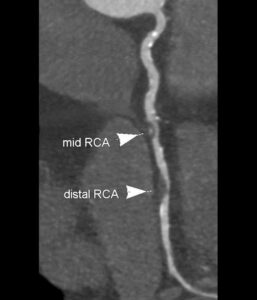
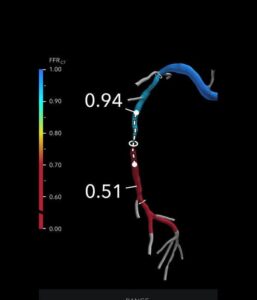
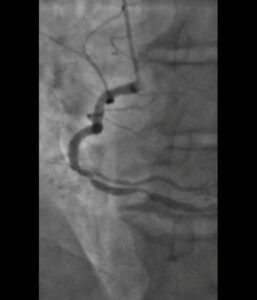
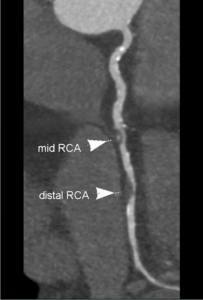
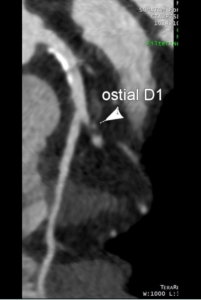

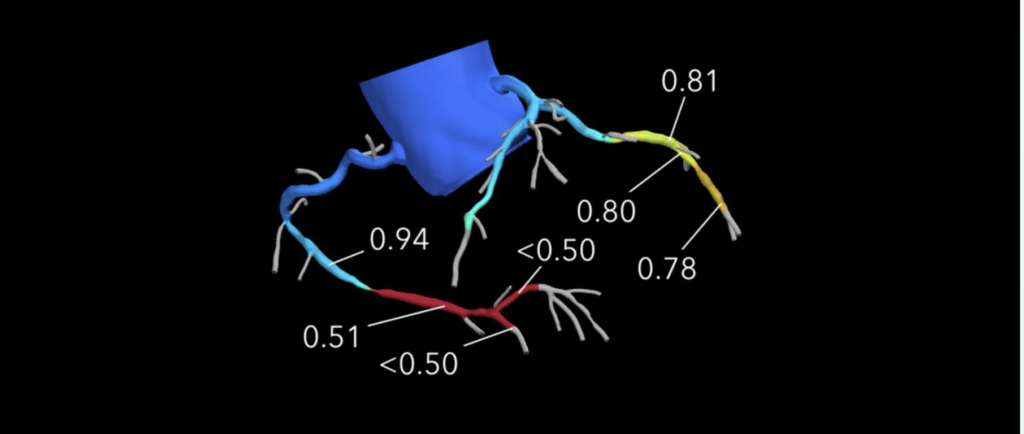

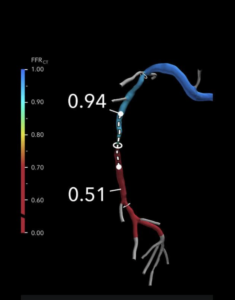
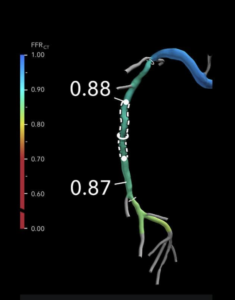
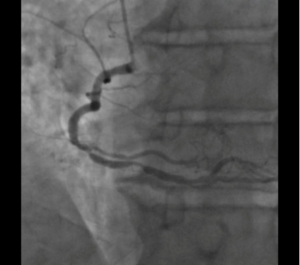
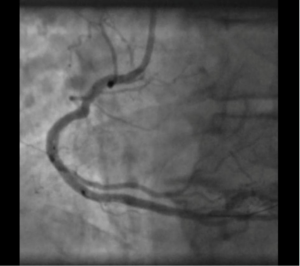

Cardiac catheterization showed 80% stenosis in the mid RCA and 90% stenosisis the distal RCA; the patient recieved two drug eluting stents (DES) leaving 0% residual stenosis.
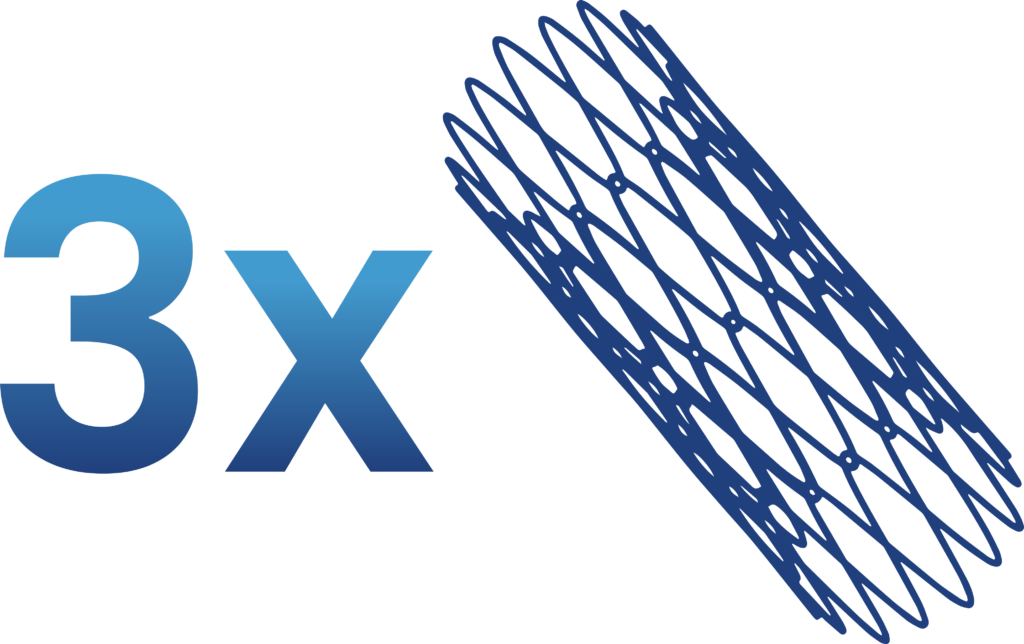
There was 75% stenosis in the proximal LCX artery, and the patient recieved a DES in this location. The patient recieved three stents in total.

The HeartFlow Analysis and HeartFlow Planner provided functional information to complement the anatomical findings in the CTA and provided guidance on how best to treatthe patient prior to the procedure.
HeartFlow is
available from anywhere
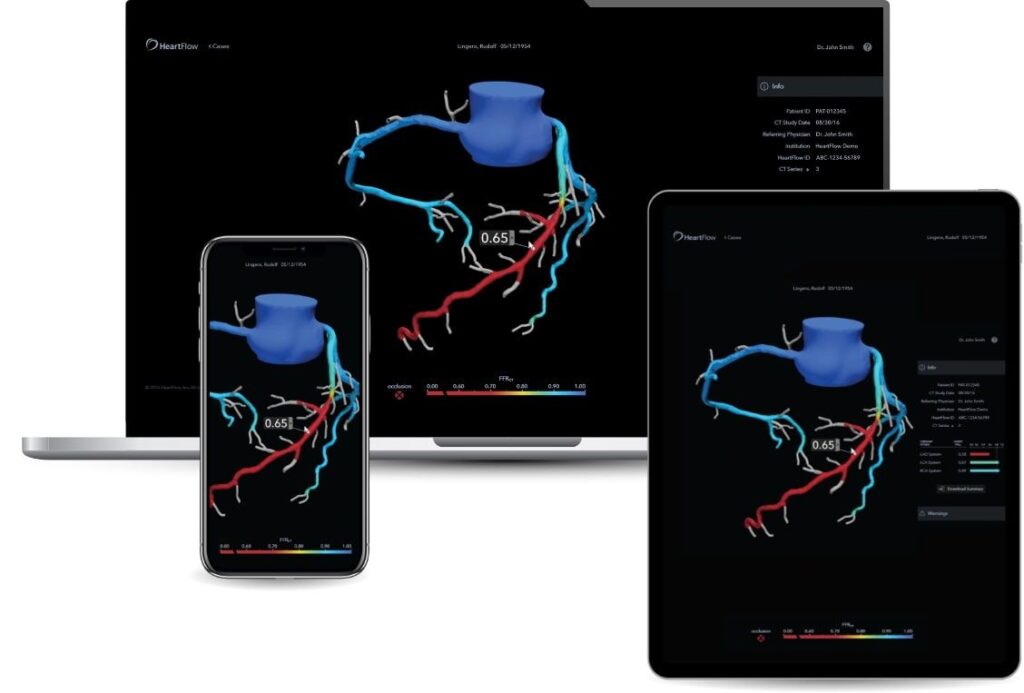


Key Benefits to
Cone Health
- Improves diagnosis of coronary artery disease using CT + HeartFlow Analysis pathway
- Supports continued CT program growth, plus improved CT reading and acquisition
- Reduces high false positive diagnostic rates allowing for more appropriate use of the cath lab
- Facilitates procedural and treatment planning for interventionalists
- Simplifies workflows and improves efficiency
- Enables meaningful patient interactions, education and engagement with
- HeartFlow mobile
of treatment plans changed after physicians evaluated patient care using the HeartFlow Analysis4
Adoption of the HeartFlow Analysis at Cone Health helped the team to further enhance their cardiac program — from growing their CCTA program to achieving greater cath lab efficiencies to strengthening team collaboration. Now with a growing CCTA program with expansion plans to include three scanning locations, eleven readers, and a growing network of referring providers, their passion for adopting advanced technology paired with a well-coordinated care team is a model of success. When administrator and physician goals are aligned, optimal patient care results.
Download the mobile app*, view a PDF of this study or share this with a colleague by clicking above.
Source: https://www.heartflow.com/education/case-studies/cone-health/
1. Arbab-Zadeh, Heart Int 2012. Yokota, et al. Neth Heart J 2018. Nakanishi, et al. J Nucl Cardiol 2016.
2. Patel, et al. N Engl J Med 2010. Patel, et al. AHJ 2014. Danad, et al. JAMA Cardiology 2017.
3. Hoffmann, et al. J Am Coll Cardiol. 2009.
4. Fairbairn, et al. Euro Heart J 2018. Patel, et al. JACC CV Imaging 2019.
*Mobile approval required by your institution to enable access.
97255998 v1

